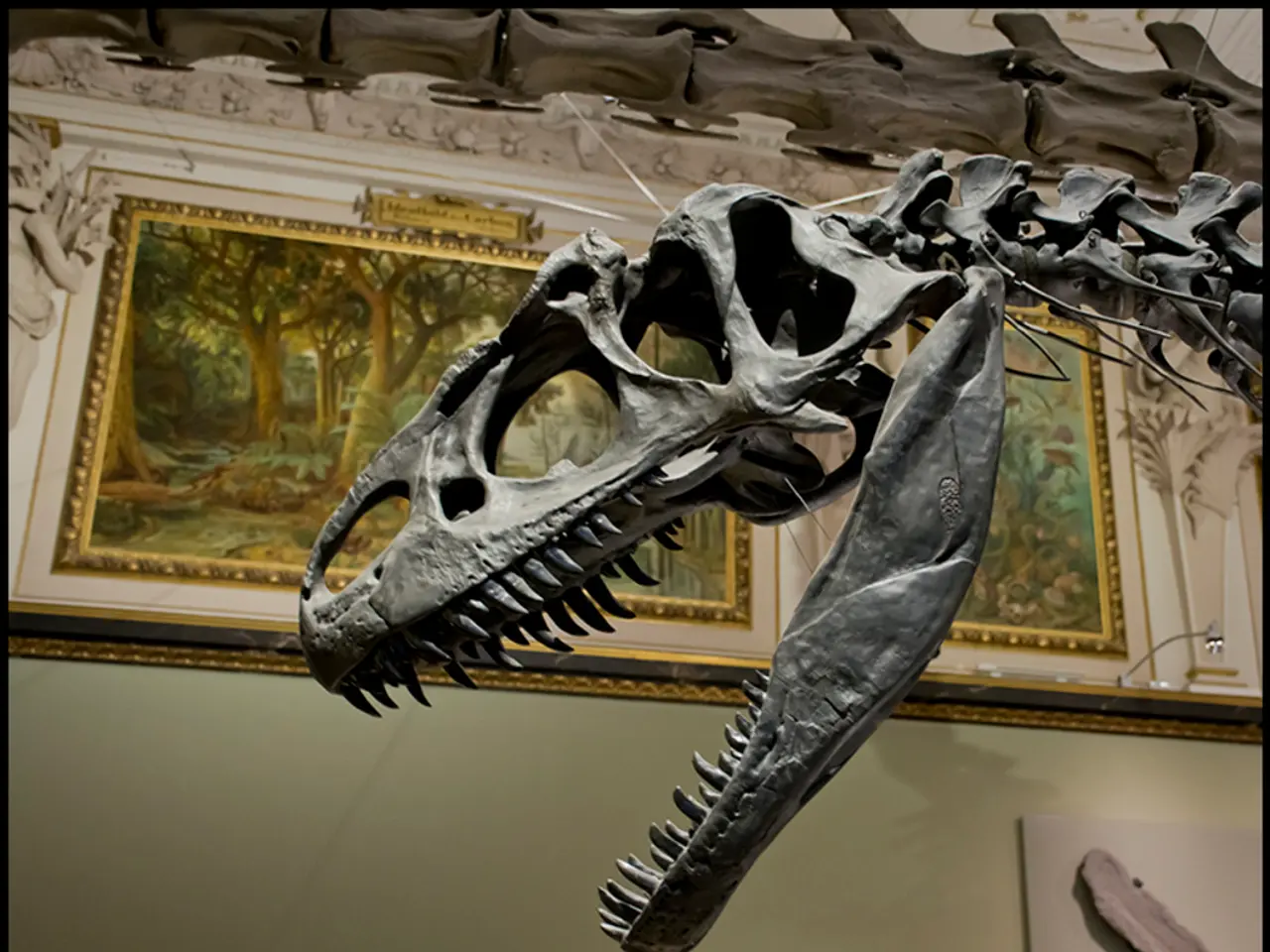Discovered: Uncharted 95-Million-Year-Old Herbivorous Dinosaur by Paleontologists
In the vast expanse of Patagonia, Argentina, a team of paleontologists made an extraordinary discovery in 2017 - the fossilized remains of a previously unknown dinosaur species. This remarkable find, named Astigmasaura genuflexa, has added a fascinating new chapter to our understanding of the dinosaur world.
Astigmasaura genuflexa was a member of Rebbachisauridae, a large family of sauropods. These herbivorous giants roamed the Earth during the Late Cretaceous period, around 95 million years ago. The excavation of Astigmasaura genuflexa required five paleontological campaigns and over 30 days of fieldwork.
The fossil was found in the lower levels of the Huincul Formation at the El Orejano locality in the Neuquén Basin. The team used various tools such as sledgehammers, chisels, and rock cutters to break away the rock and uncover the fossilized remains. After cleaning the fossil in a laboratory, researchers were left with a near-complete postcranial skeleton, including 20 caudal vertebrae, 19 haemal arches, both ischia, pubis, part of the ilium, two femurs, two tibias, two fibulas, two astragali, and both nearly complete feet.
Comparing these remains to other dinosaur species allowed the team to identify Astigmasaura genuflexa as a rebbachisaurid sauropod. However, some unique morphological features, such as its tall neural spines and tetraradiate neural laminae, asymmetric middle haemal arches, mediolaterally compressed proximal tibiae, and a femur with medially inclined distal condyles, let them know that this species was new to science.
Measuring nearly 60 feet in length and weighing over 10 tons, Astigmasaura genuflexa is one of the largest rebbachisaurids discovered to date. Its unique combination of diagnostic features distinguishes it from all other sauropods, making it a significant addition to our knowledge of dinosaur diversity.
The identification of Astigmasaura genuflexa was announced in the scientific journal Cretaceous Research, adding to the six weirdest dinosaur species known to science. Other notable species include Duonychus tsogtbaatari, a therizinosaur found in Mongolia’s Gobi Desert, which is distinguished by having only two foot-long clawed fingers on each hand.
The discovery of Astigmasaura genuflexa has enlightened researchers about the caudal and pelvic girdle anatomy of Rebbachisauridae and suggests a greater taxonomic diversification within the family during the last stages of its evolutionary history than previously known. This finding underscores the ongoing excitement and discoveries in the field of paleontology and our ever-growing understanding of the dinosaur world.
The discovery of Astigmasaura genuflexa, a rebbachisaurid sauropod, has not only expanded our knowledge about dinosaur diversity but also shed light on the caudal and pelvic girdle anatomy of Rebbachisauridae. This finding highlights the significance of technology, such as sledgehammers, chisels, and rock cutters, in the excavation process, and underscores the ongoing advances in science and space-and-astronomy, as we continue to unveil new chapters in history.




